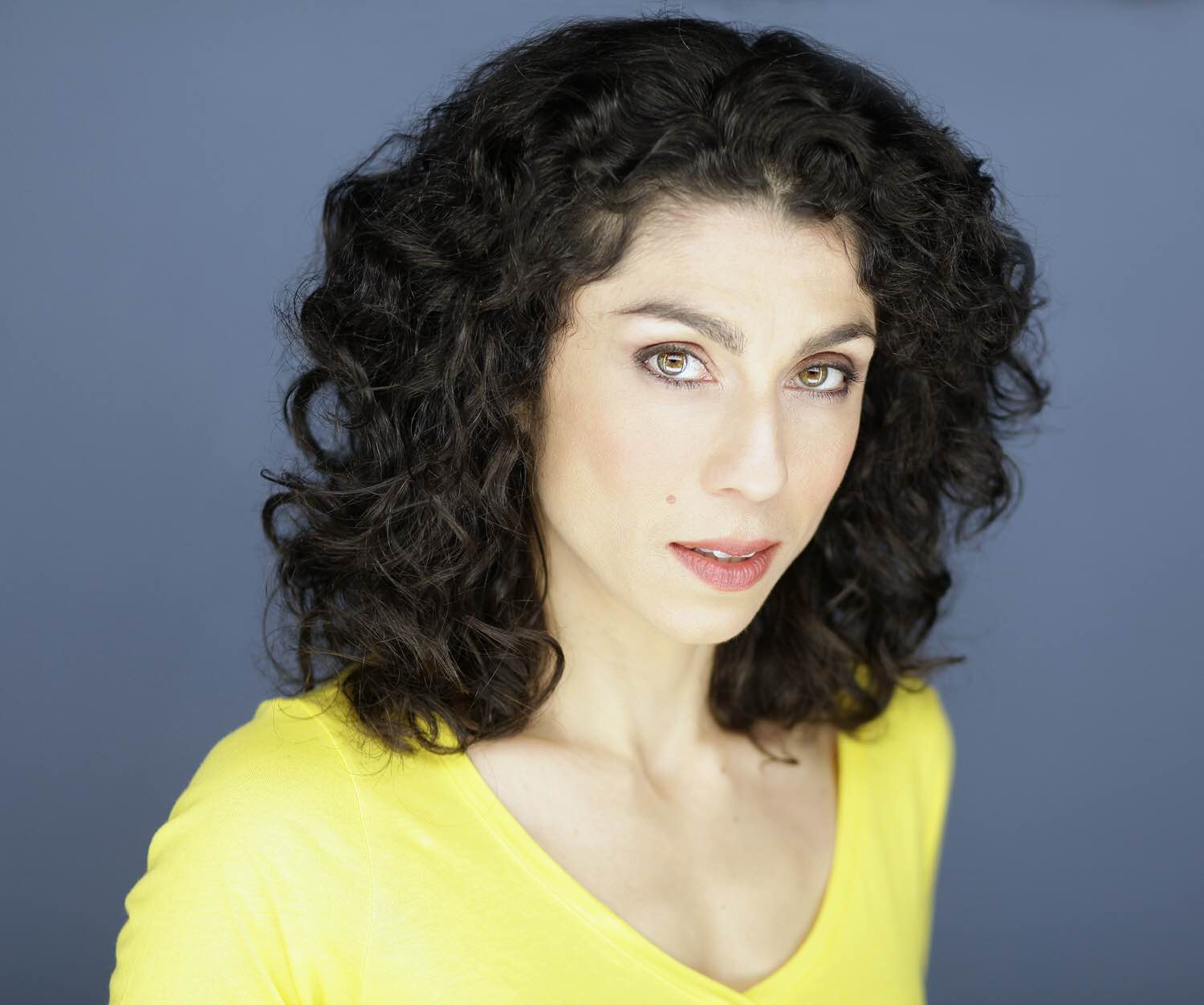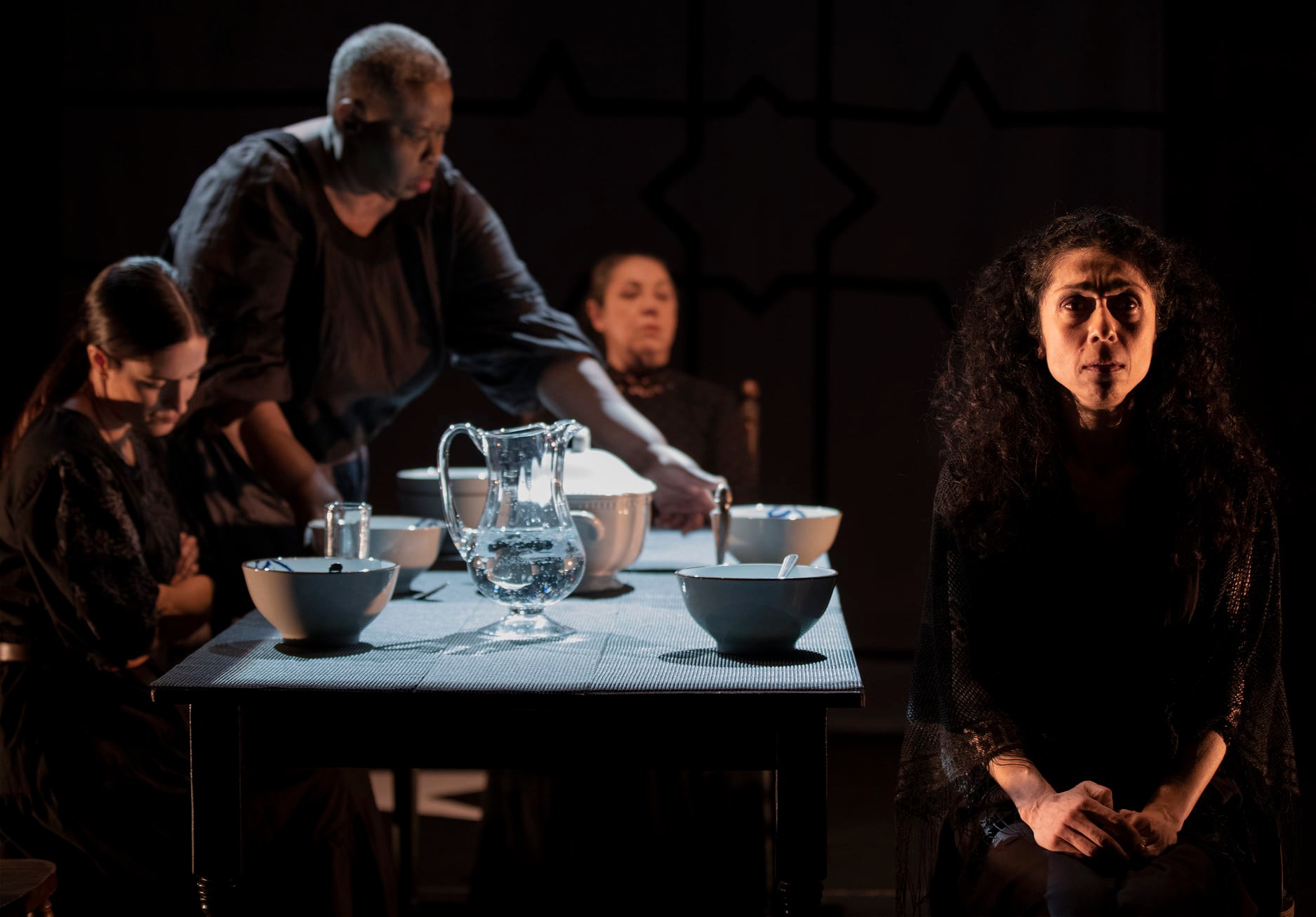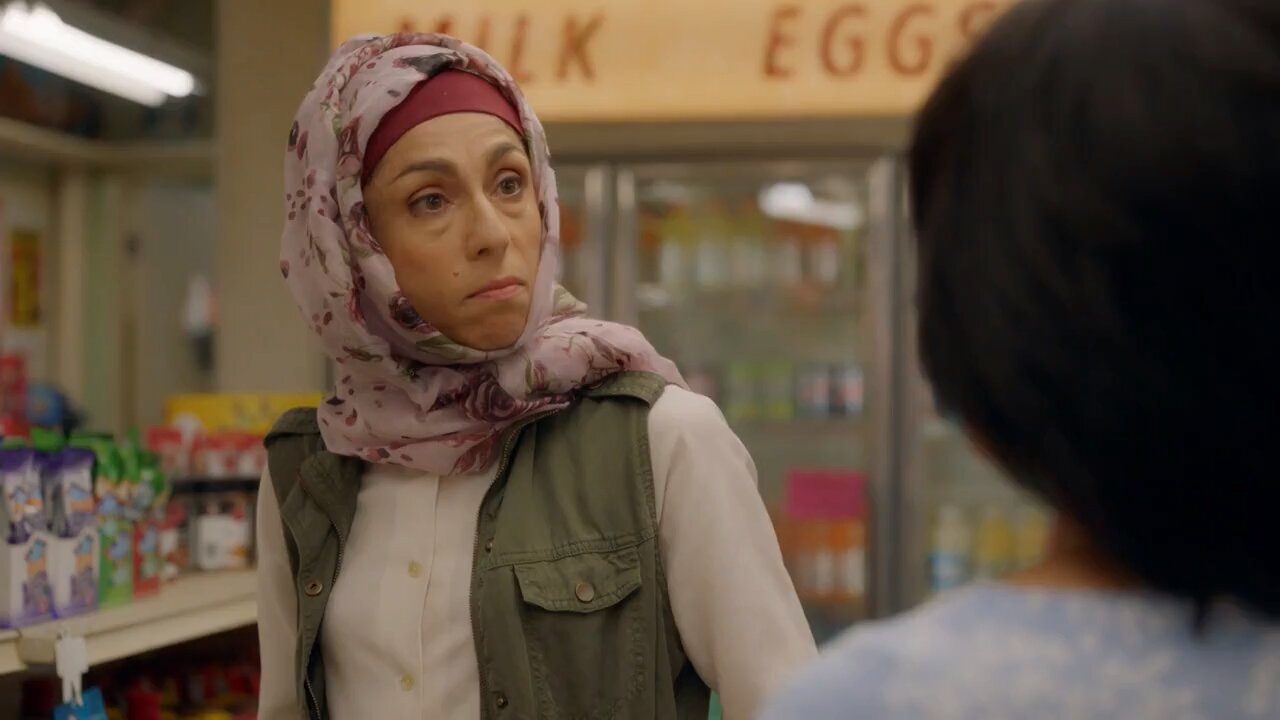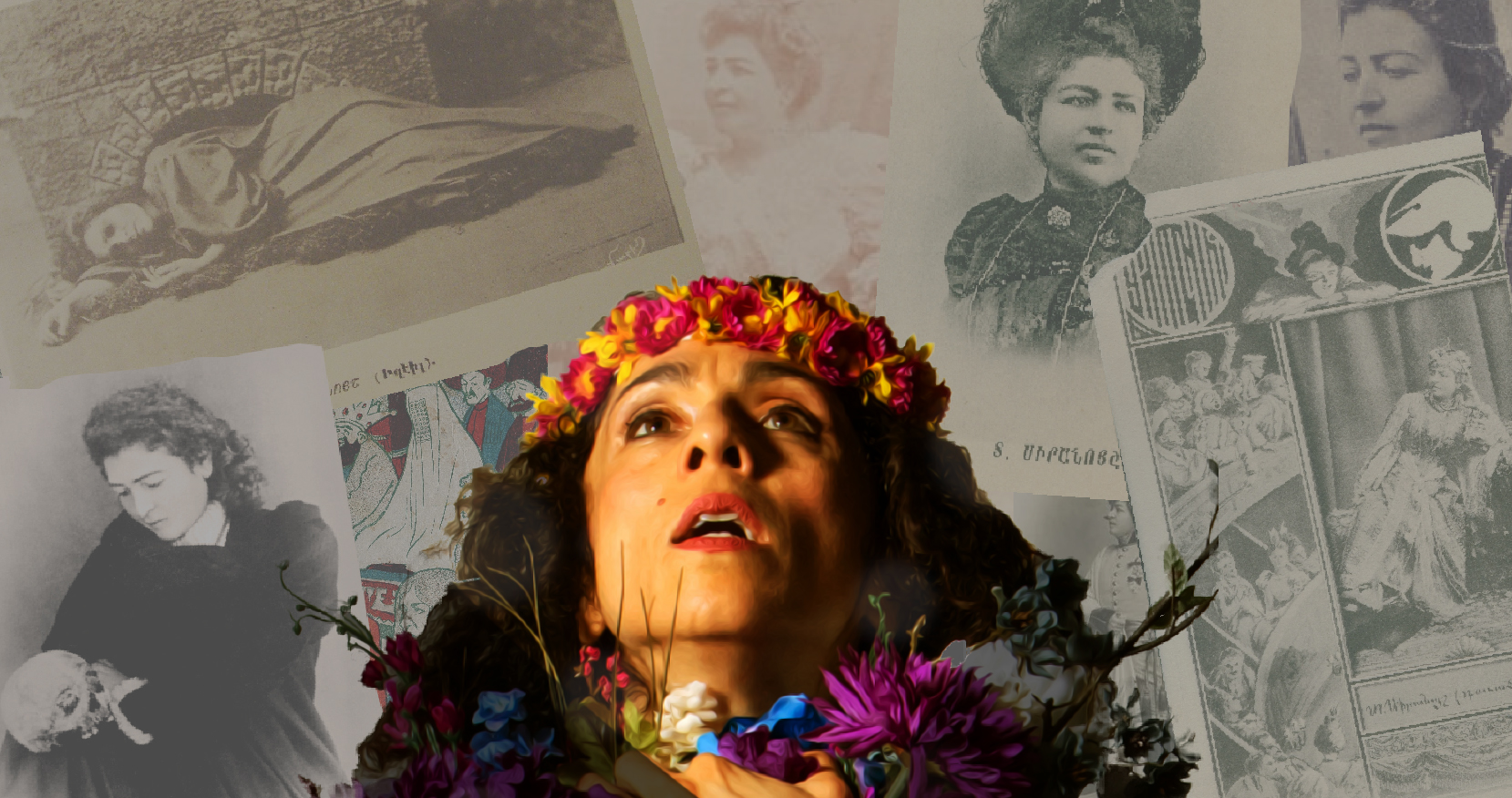Do you remember what career you dreamed of having when you were little?
At some point or another, we’ve all been asked the cliché question: “What do you want to be when you grow up?” The truth is, very few people wind up in occupations they dreamed about as children.
Lara Arabian is a part of the small minority of folks who had it figured out early on.
“I always knew I wanted to be an actor,” she says in a recent sit-down with Torontohye. And though the Dora-nominated, Toronto-based performer, writer, and educator’s journey was not necessarily easy, she never lost sight of the dream she set out to make a reality at a young age.
Arabian is now getting ready to debut her multimedia, multilingual one-woman show that delves into her desire to dig deeper into her cultural roots. “Siranoush,” centred around the story of a 19th-century Armenian actress who was a trailblazer both on and off the stage, will take audiences across time and space to explore the power of theatre as a way of cultural survival and female empowerment.
We recently sat down with Lara to learn more about her journey, her craft, and her latest project, which will soon debut at the fifth RUTAS Festival in Toronto.
Torontohye: Lara, where does your story begin, and how does it end up in Toronto?
Lara Arabian: I was born in Beirut. My mother is from Lebanon, and my father is from Syria. We left because of the [Lebanese Civil] War and ended up in Canada. We moved around a lot because of my dad’s work; we lived in Ottawa, then Scarborough, and then in the States. We came back [to Canada] right around the time I was going to start my university studies. I ended up studying drama and English literature at the University of Toronto. And then, upon graduating, as people do, I said to myself, “I’m going to Paris,” and ended up staying there for ten years, working as an actor, mainly in French. I always knew I wanted to be an actor.

While in Paris, at a certain point, I figured I had to decide what to do next. I loved what I did too much not to try [acting] in Canada. That’s when I decided to move back and settle in Toronto, and I’ve been working ever since.
T.H.: You mentioned that you always knew you wanted to be an actor. How early did you come to this realization?
L.A.: I talk about this a little in “Siranoush.” The play is very much about looking at the role of art in life and what it does. As a kid, I would stare in the mirror, recite dialogue from movies, and pretend. I went on to do school plays and ended up loving it.
Like many Armenian parents, my parents were not into this idea of me becoming an actor. They weren’t ever mean about it, but it wasn’t going to happen for them. They just didn’t know how to deal with a child who wanted to act—it wasn’t in their realm. I remember them telling me, “You’re going to end up in a cardboard box somewhere on the streets.” As an immigrant family, this rejection came from a place of fear, and I completely understand why. Leaving the Middle East when we did, meant my parents had to give things up to try and offer us, my sister and me, a better life.
But I was pretty determined. And in the end, the work convinced them. It was a bit of a tough haul to get them on my side.
T.H.: It must have been. Tell us about the Toronto acting scene when you moved back from Paris. How have things changed since?
L.A.: I think it’s really changed in the last ten years, particularly in the last five or six years. When I first got back [to Toronto] and even in theatre school, I never quite fit in; people didn’t know what to do with the ethnically ambiguous actor. I would go to the Shaw Festival, and they would have a wall full of photos of past productions, and I would joke that it was “the wall of white.” Even in theatre school, it wasn’t easy.
What’s interesting is that I’m an acting teacher now at two theatre schools—at Sheridan College’s musical theatre program and George Brown’s acting for film and media program. From the very first day of teaching, I expected all of [my students] to show up, for all of them to come into the room and perform.

In the Toronto theatre scene, up until very recently, there were a lot of theatres where if you weren’t Western European white, don’t even bother; they’re not even going to see you. And that has started to shift. The kinds of stories that we’re telling, the people who are telling these stories, the people who are in charge of these theatres, all of it is starting to shift. It’s an exciting change, and I hope it’s sustained; I hope it continues to crack open.
I am working with Aluna Theatre to present “Siranoush.” I have worked with them a number of times. Their mission is to represent Latin American and Latinx theatre, and they’re very much about showcasing voices that don’t typically get seen on Toronto stages. I believe this is part of why Armenian audiences don’t normally go to the theatre here, because they don’t connect with the stories.
T.H.: You mentioned that you’re also an educator and that you teach theatre. You’re also the chair of Sheridan College’s Expanding the Lens series. Tell us a little bit about that.
L.A.: That’s something I am pretty passionate about. I also work with ACTRA’s diversity and inclusion committee. These things, I think, are essential.
With Expanding the Lens, it’s really about expanding the types of stories that get told and who gets to tell them. And that’s across the board, from BIPOC to neurodiversity, physical abilities, LGBTQ stories, and female-led stories. It’s about centring those artists and those voices. That’s where the change has to happen—in the theatre schools. We need to empower the students. There are so many fantastic artists working, but we sometimes don’t hear about them, or they don’t get the recognition that they deserve. Our student body is a reflection of that population as well, so I want to empower the students so that when they go out, they are not only seeking that work but are also creating and recognizing who they are, who their allies are, and who they can work with. Theatre history shouldn’t be looked at only through the lens of what I would say is a typical very, very white male-driven 20th-century lens. Everyone should get to be seen, and other perspectives should be discussed.
T.H.: Some of your recent acting credits include roles in pretty big shows, like “Kim’s Convenience” and “The Handmaid’s Tale.” What was it like working on such critically acclaimed productions?
L.A.: “Kim’s Convenience” was an absolute joy. I played a Syrian refugee woman who has recently arrived [to Canada]. I was only supposed to do one episode; I ended up being featured throughout five seasons, so it was pretty dreamy. I knew the man who played Mr. Kim, since we went to theatre school together. On the first day on set, he was there, Gene who plays his wife was there, and of course, so was the director of that episode, whose family is from Ethiopia. We were all speaking as I’m talking to you now, without an accent. But as we started shooting the scene, we all just started speaking like our parents! That was likely the most Toronto experience I’ve ever had on set. All four of us had that immigrant experience, which we brought to the show.

I did just one episode of “The Handmaid’s Tale,” but it was such a joy to be a part of; I’m a big fan of the show. I just did another series as well, called “Ghostwriter.”
T.H.: Is that a remake of the 90s show?
L.A.: Yes! Apple TV+ recently revamped it. I just finished the second season, playing the mother of one of the three leads. Again, I am playing a Syrian, which happens often, and it was really fun. I also just did one episode for the upcoming Kiefer Sutherland show, called “Rabbit Hole,” which is shot in Toronto.
It’s such a different world [compared to the theatre], but I love being able to do different things. I have very long days between acting and teaching; it can get exhausting, but it’s also a joy.
T.H.: Tell us about “Siranoush.” You mentioned earlier that perhaps the Armenian community doesn’t typically go to the theatre here in Toronto because they aren’t well represented. Is that what you’re trying to accomplish with “Siranoush”?
L.A.: Siranoush (born Merope Sahaki Kantarjian) was the first woman in the non-western world to play Hamlet. I had never heard of her. I was inspired by her and wanted to tell her story. It soon became a dialogue with Siranoush. Part of that dialogue was the following: What do we Armenians value in arts and culture? What gets lost in the diaspora, especially from the lack of female voices? What gets lost, and how can we bring that back?
We have such a rich history in the arts, and some incredible cultural work is taking place in the diaspora. But with this show, I wanted to, first and foremost, centre Armenian in the play—there’s lots of Armenian [spoken] and if that’s going to be surtitled for non-Armenian speaking audiences. There are also a few times when it’s not [surtitled]; I wanted to share that intimate experience and to say, “this one is for you [Armenians];” we’re having a moment here. It’s a very intimate show, and the audience is like the third character. While it’s a one-person show, and I play all the roles, t the audience is kind of the last character in this piece. It was vital for me to centre our stories.
When I tell non-Armenians about Siranoush, their eyes widen. Everyone’s heard of Sarah Bernhardt, and she was fantastic. Actually, when Siranoush was alive, they would call her “the Armenian Sarah Bernhardt.” And her response to that was great; she would say that Sarah Bernhardt is the French Siranoush!
T.H.: That is a great response. A short excerpt is available from a version of the play you presented back in 2019—almost like a teaser.
L.A.: Yes, in 2019, I presented the first 20 minutes of the piece. It was at a festival for new works and works in development.
T.H.: Has “Siranoush” changed since then?
L.A.: At that point, the piece was still very much in development. It has changed, but I would say the central driving force of this dialogue between the character of Lara and Siranoush has remained. And Lara’s curiosity is as a 21st-century Armenian-Canadian actor and how the past feeds into that. Some of the storytelling methods are different, but the elements that you see in the trailer—the puppeteering, the video—that’s all there. Me speaking directly to the audience—that’s also still there.
T.H.: You’ll be presenting “Siranoush” on Sept. 30 and Oct. 1-2 at the fifth RUTAS international performing arts festival in Toronto. What can you tell us about the shows and what’s in store for the piece’s future?
L.A.: It’s funny you ask because I really see those three shows as the launch for “Siranoush.” From the beginning, I’ve thought that once it’s fully created and ready, I want to go out and present it elsewhere. I say this because I believe the story speaks not only to all Armenian communities but also to different, non-Armenian audiences. I would also love to take “Siranoush” to Armenia.
I’m also happy that our sound design is co-created by a Toronto-based Armenian musician, Armen Bazarian, who is excellent. We have a very international team, and they’ve all said they must take their families and their loved ones to see this show. They’re not Armenian, but they all get it.
I see these three performances as the starting point, which is really what the RUTAS festival is all about: It’s meant to be a platform for these shows to go on and have other lives elsewhere. It’s the start of a continuing conversation.
Particularly now, at this critical time for Armenians, we have to be seen, our voices must be heard, and our stories must be told. It’s crucial, and as I say in the play, Siranoush performed in Armenian as a weapon of cultural survival; she writes about that in her journal. I can only hope to carry forth that work.
“Siranoush” will debut at the RUTAS Festival on Friday, Sept. 30, 2022, at 7:30 p.m., at Studio Theatre, Factory Theatre (125 Bathurst Street, Toronto). Two additional performances will take place on Oct. 1, 2022, at 3 p.m. and on Oct. 2, 2022, at 4 p.m. Click here for more details and to purchase tickets.

